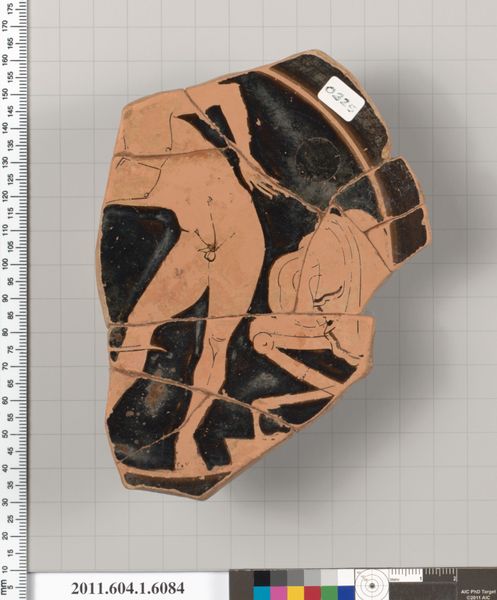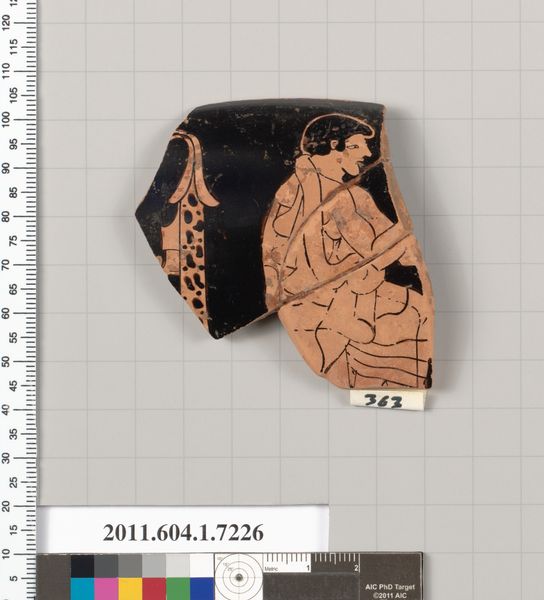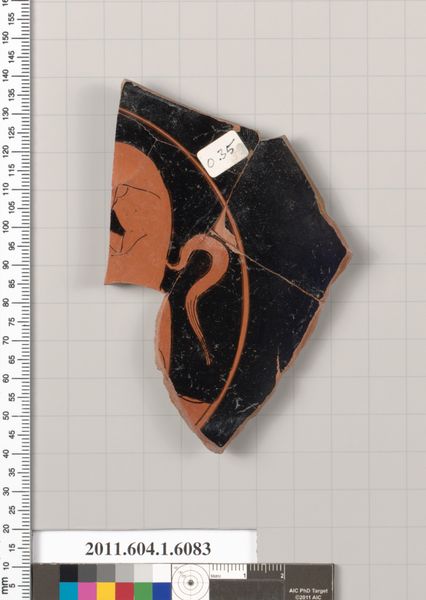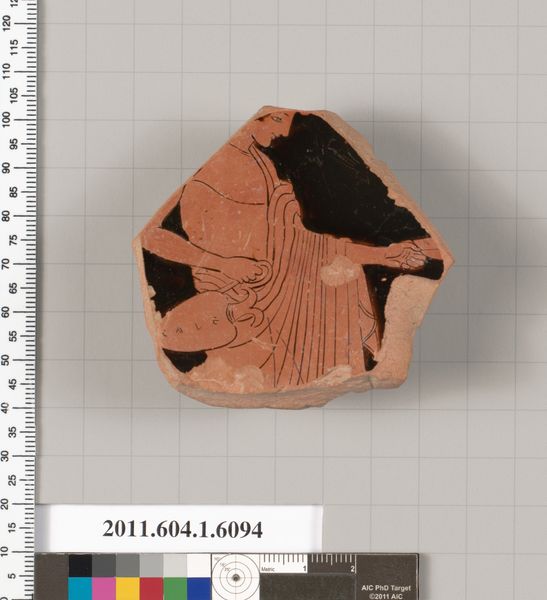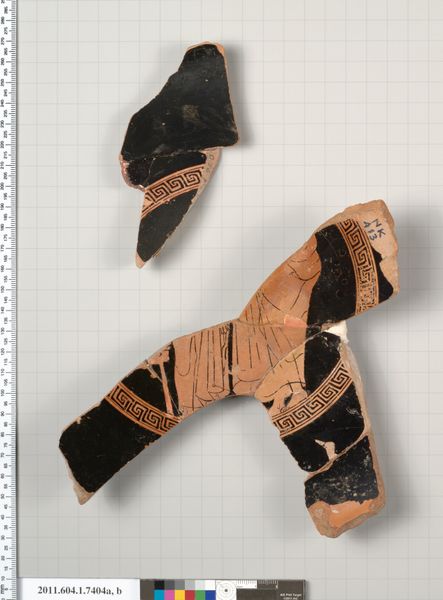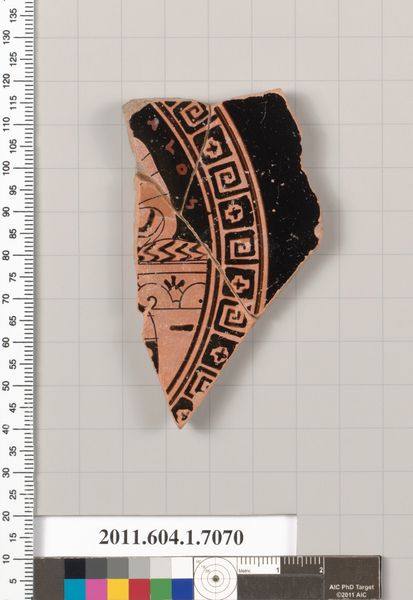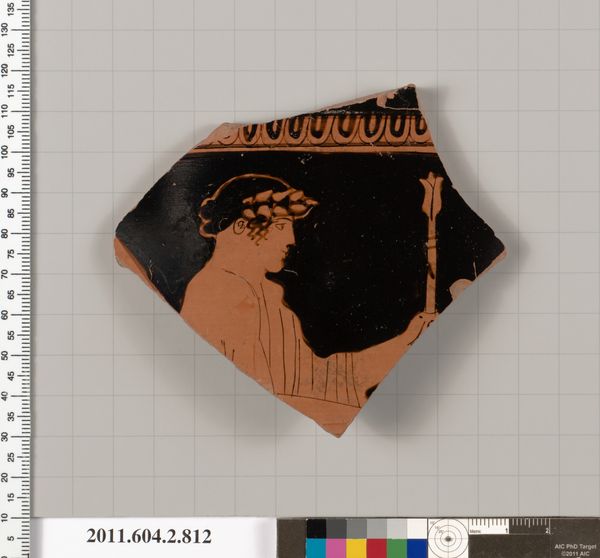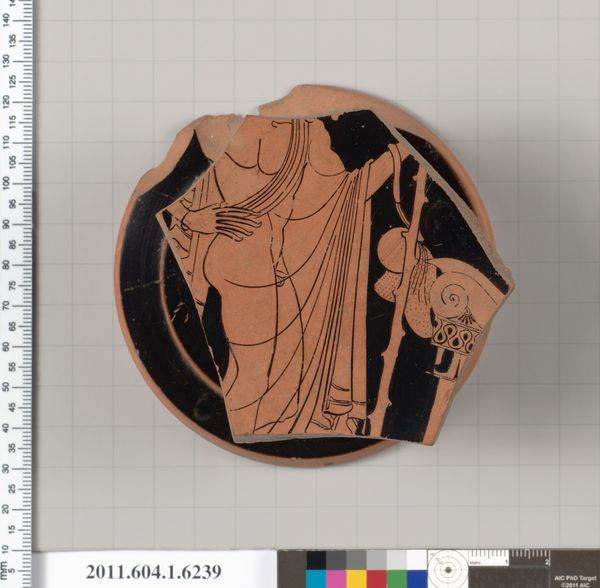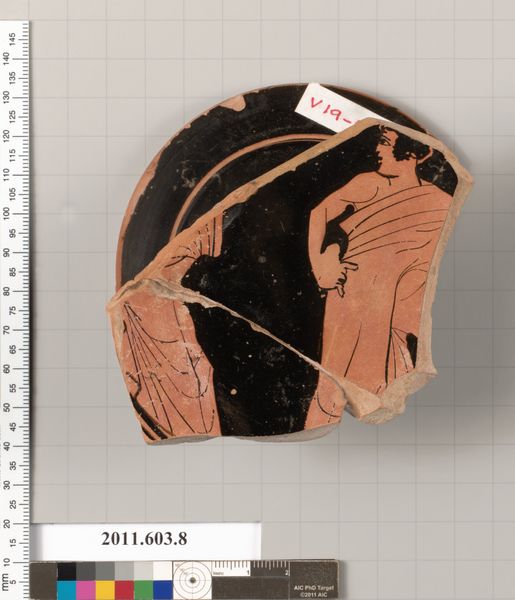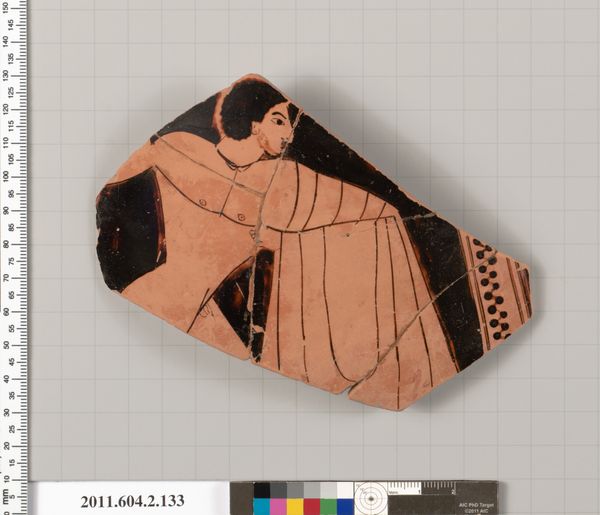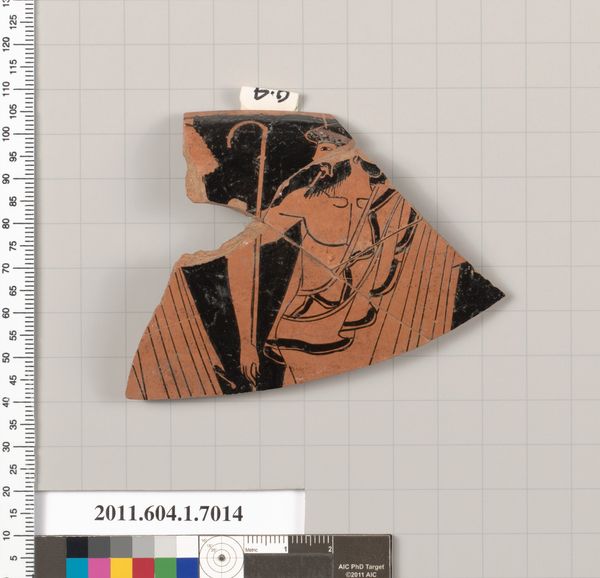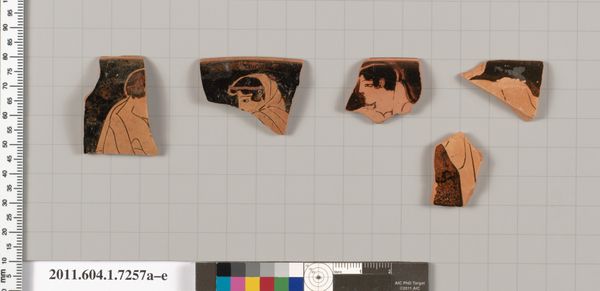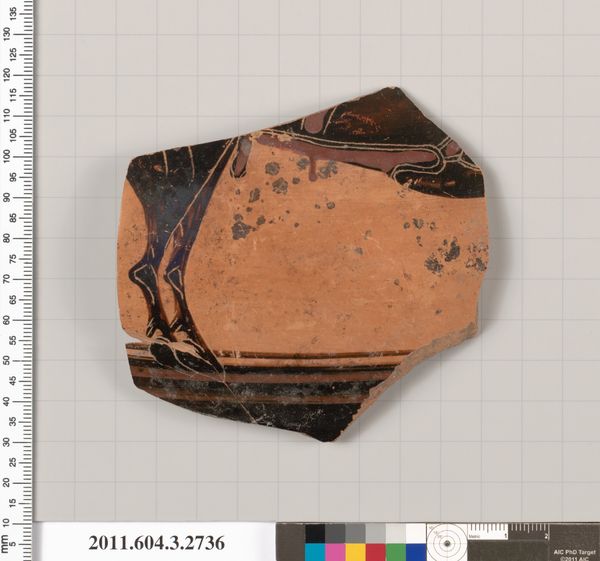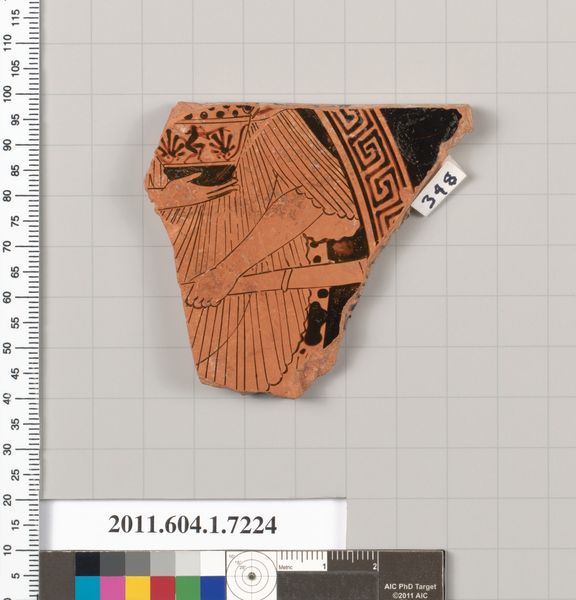
drawing, ceramic
#
portrait
#
drawing
#
greek-and-roman-art
#
ceramic
#
painted
#
figuration
#
ancient-mediterranean
#
mixed media
Copyright: Public Domain
Curator: What strikes you first about this terracotta fragment of a kylix, or drinking cup, dating back to 530 BC? It’s currently held at the Metropolitan Museum of Art. Editor: The fragmented nature is poignant. Despite its incomplete state, there’s a real sense of preserved narrative here. The black-figure technique against the red clay creates a stark, compelling contrast. Curator: Precisely. Consider the deliberate construction; the artist known as Apollodoros meticulously employed the black-figure style, a hallmark of Greek vase painting during this period. The painted silhouette, with the details incised to reveal the red clay beneath, emphasizes form and line. Editor: And those incised lines, especially in the drapery, give texture and depth despite the two-dimensionality. How would a vessel like this have functioned in its original social context? Curator: These kylixes were primarily used during symposia, aristocratic drinking parties. The imagery depicted wasn't merely decorative, it often alluded to myths, stories and societal values relevant to the symposium’s participants. So, what stories are suggested by the remaining scene? Editor: What’s visible depicts a male figure, seemingly reclining, perhaps at a feast, and it's suggestive of leisure and privilege. Its creation for and consumption by elite members of society tells us so much. But what about its symbolism; would drinking from it imbue drinkers with attributes or stories linked to the depicted figures? Curator: Absolutely. The imagery was integrally linked with the ritualistic and performative aspects of the symposium. Looking closely, the arc of the black field surrounding the figure, might evoke the sails of a ship, the movement itself speaking of adventure and cultural expansion in Ancient Greece. Editor: Yes, the movement and curvature work well with the idea that it's incomplete. Considering its fragility now, as a shard rescued by time, it’s rather profound that such a simple form provides such powerful insight into life thousands of years ago. Curator: Indeed. It allows us to contemplate the aesthetic choices of the artist but also consider its life and role within Greek society. Editor: It really emphasizes the intersection of form, function, and meaning inherent within Ancient Greek material culture.
Comments
No comments
Be the first to comment and join the conversation on the ultimate creative platform.
